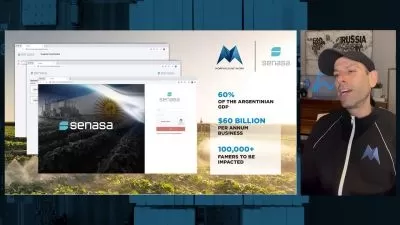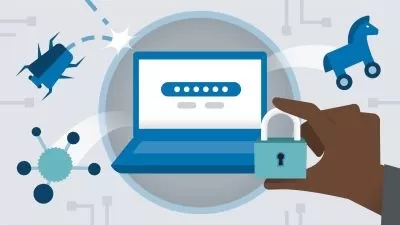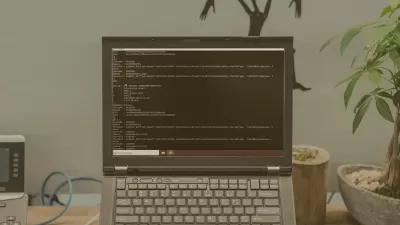Practical Blockchain Security
Dan Morrill
22:07:36
Description
Blockchain Security from A to Z
What You'll Learn?
- Classify the Security Fundamentals of Blockchain architecture
- Classify the Security Fundamentals of Blockchain Engineering
- Compare and Contrast Front End and Back End risks
- Summarize common Blockchain Security Mechanisms
- Summarize Blockchain Protocols
- Summarize the role ERC’s have in Blockchain Security
- Appraise Common Smart Contract Security Risks
Who is this for?
More details
DescriptionWelcome to the Practical blockchain security course. This course looks at how architecture, engineering, software design, and software tools all influence how information and data security is implemented in different kinds of blockchains. We will focus on the three most popular blockchains, Bitcoin, Ethereum, and Hyperledger. This course is a holistic view of information security, those things that cannot be directly controlled, those things that can be directly controlled, and how controls, technical, procedural, and in some cases policy-based can enhance a company's security posture for its blockchain implementation.
Course Objectives:
Classify the Security Fundamentals of Blockchain Architecture
Classify the Security Fundamentals of Blockchain Engineering
Compare and Contrast Front End and Back End risks
Summarize common Blockchain Security Mechanisms
Summarize Blockchain Protocols
Summarize common Blockchain controls that can be used to enhance security
Summarize the role ERC’s have in Blockchain Security
Appraise Common Smart Contract Security Risks
This course has been designed to be applicable to all levels of knowledge about the blockchain and takes a total view approach to blockchain engineering, security, and code development. From tools to techniques, ports, and protocols, ERCs, and other methods to update systems, this course is comprehensive across the cloud, hyper-ledger, Ethereum, and points in between. From code and good coding practices, to how to do good effective DAOÂ governance, there is great information and tips throughout this course for the things you want to do in the blockchain.
The author of this course has certifications in Security, Blockchain Security, NFTs, and Blockchain Engineering, and gives up-to-date information about the state of Blockchain Security, and how it can be accomplished as part of a normal business process.
Welcome to the course!
Who this course is for:
- Anyone interested in blockchain security
Welcome to the Practical blockchain security course. This course looks at how architecture, engineering, software design, and software tools all influence how information and data security is implemented in different kinds of blockchains. We will focus on the three most popular blockchains, Bitcoin, Ethereum, and Hyperledger. This course is a holistic view of information security, those things that cannot be directly controlled, those things that can be directly controlled, and how controls, technical, procedural, and in some cases policy-based can enhance a company's security posture for its blockchain implementation.
Course Objectives:
Classify the Security Fundamentals of Blockchain Architecture
Classify the Security Fundamentals of Blockchain Engineering
Compare and Contrast Front End and Back End risks
Summarize common Blockchain Security Mechanisms
Summarize Blockchain Protocols
Summarize common Blockchain controls that can be used to enhance security
Summarize the role ERC’s have in Blockchain Security
Appraise Common Smart Contract Security Risks
This course has been designed to be applicable to all levels of knowledge about the blockchain and takes a total view approach to blockchain engineering, security, and code development. From tools to techniques, ports, and protocols, ERCs, and other methods to update systems, this course is comprehensive across the cloud, hyper-ledger, Ethereum, and points in between. From code and good coding practices, to how to do good effective DAOÂ governance, there is great information and tips throughout this course for the things you want to do in the blockchain.
The author of this course has certifications in Security, Blockchain Security, NFTs, and Blockchain Engineering, and gives up-to-date information about the state of Blockchain Security, and how it can be accomplished as part of a normal business process.
Welcome to the course!
Who this course is for:
- Anyone interested in blockchain security
User Reviews
Rating
Dan Morrill
Instructor's Courses
Udemy
View courses Udemy- language english
- Training sessions 107
- duration 22:07:36
- Release Date 2023/05/17















